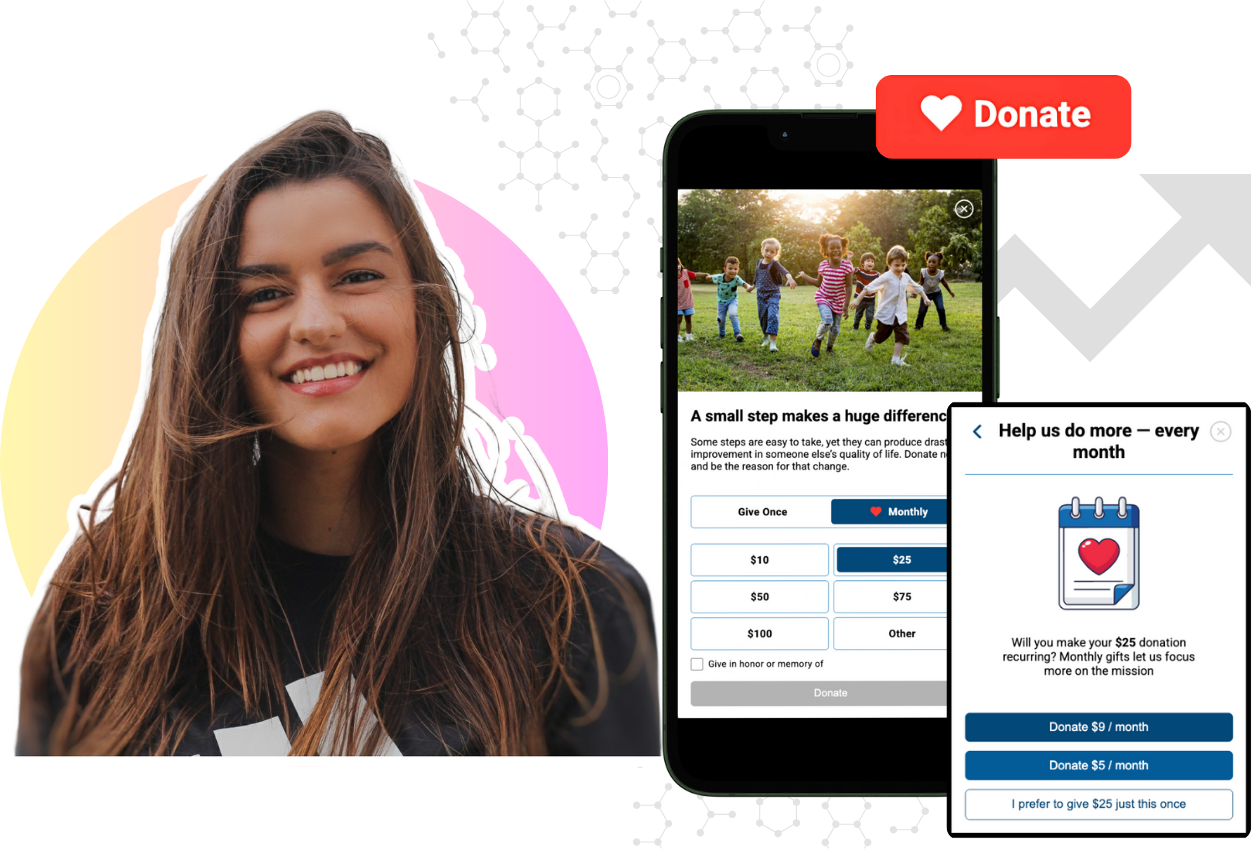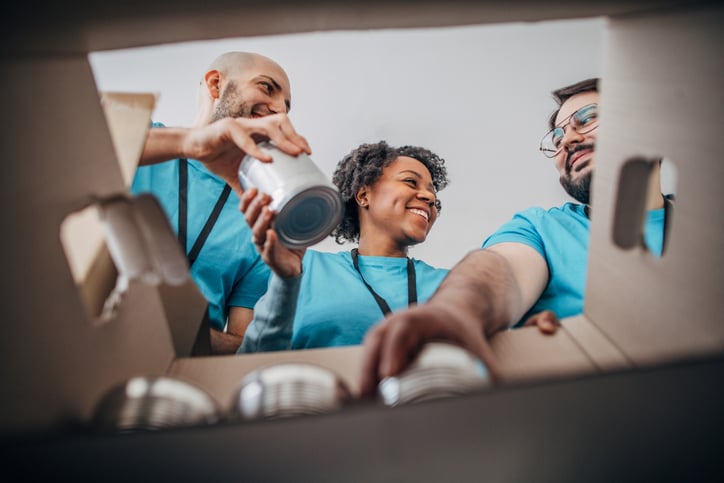Why You Should Accept Noncash Donations
If you haven’t dipped your organization’s toes into the noncash waters, or if you’re already promoting noncash donations but you’re bone dry when it...

Mobile-First Pop-Up Donation Form
Launch mobile-first pop-up forms in minutes, use built-in tools to capture more donations, and optimize the giving experience—no dev team required.
New to online donation pages for your nonprofit? Start here.
Donation page A/B testing - no science degree needed.
Keep your donation page loading fast - and drive higher conversions.

The 4 Types of Online Donation Experiences
89% of donors leave without giving. Learn how to use the right donation form to close the gap and boost conversions.

Most nonprofits shy away from asking donors to give a second gift just weeks after their first donation. They fear their current donors will get burned out due to multiple asks, or they’re afraid they might offend them by implying that their first gifts may not have been generous enough. Unfortunately, organizations have shied away from making that second ask so frequently that more than half of new donors don’t make a second gift at all. In fact, one study by NextAfter showed just 14% of organizations prompt a recurring gift ask during the donation process.1
The second gift is a vital part of the giving lifecycle. Not only is it expensive to be constantly acquiring new donors, a recurring gift can bring consistent and higher funds into your organization. There is a term called “lifetime value” that helps predict how much money an organization could expect to receive from a segment of donors in their lifetime – that’s money coming from not just one gift, but multiple.
Donors who give a second gift within three months of their first tend to have a lifetime value four times greater than other one-time donors.2 That’s why making your second ask centered on noncash giving is a powerful opportunity — and it’s one that many organizations are missing out on today. With Giving Tuesday 2022 upcoming on November 29, this is a great day to remind donors of not just it being a time to give, but there are ways to give more than money.
Take a look at these two possible introductions to a solicitation:
Email Version 1
Dear Mr. and Mrs. Johnson,
Thank you so much for your generous contribution to the City Charity. Because of your support, we’ve been able to provide food and shelter to more than 600 citizens over the course of the last three months.
As you know, the need continues to grow, which means we need your support now more than ever. Please consider making an additional gift today so we can continue serving our community tomorrow.
Email Version 2
Dear Mr. and Mrs. Johnson,
Thank you so much for your generous contribution to the City Charity. Because of your support, we’ve been able to provide food and shelter to more than 600 citizens over the course of the last three months.
As you know, the need continues to grow, and we’re committed to doing all we can to serve people in need in our community. That’s why we’re excited to share that we now have the ability to accept noncash gifts — things like cell phones, stocks and bonds, gift cards, vehicles, and much more.
Visit this link to learn more about which items we’re able to accept and how simple it is to increase your impact on the Saginaw Bay City Charity through a noncash donation today.
Which one of these do you think would be most effective?
Version 1 would be an easy email to write, an easy phone call to make, and an easy ask to share during a fundraising dinner. But there are parts missing to build out its full effectiveness.
Version 2 gives you:
Donors are often surprised and delighted that their high value belongings can help those in need. Some may ask, “What’s in it for me?” But as they understand the value those items possess, they can also be just as motivated by the financial benefits they would receive from donating those items as they are with their cash.
Be sure to share these benefits:
Noncash donations aren't just cars and electronics, either. The IRS treats both stocks and cryptocurrency as property, meaning they both have the same requirements for tax filing, and benefits like donating any other form of capital asset. When the donor gives stock or crypto, they don't have to pay the capital gains tax and neither do you as the organization.
Every chance you get, use an eye-catching way let everyone know you accept noncash gifts and how easy it is to donate. This could be done through social media posts, your thank you donation receipts, or by end-of-year gift deadline reminders. This simple addition to your fundraising strategy could be just the change your organization needs to turn the corner on donor retention.
Even then, why stop at a second ask? Once you open the door to noncash giving, you can further utilize it in your fundraising efforts across the board.
The possibilities are endless, and noncash donations are a win-win for everyone involved. By providing a noncash giving option for Giving Tuesday, you’re not only allowing donors to make a greater impact for your cause by clearing out unnecessary clutter and increasing your dollars in the door, you’re also strengthening donor relationships.
Get your share of the billions given in noncash and maximize the lifetime value of your donors starting on Giving Tuesday.
1 NextAfter: What You Can Learn About the Online Recurring Giving Experience From 115 Nonprofits
2 NextAfter: 3 Reasons Why Recurring Giving Is Crucial to Your Fundraising (Both Today and Tomorrow)

If you haven’t dipped your organization’s toes into the noncash waters, or if you’re already promoting noncash donations but you’re bone dry when it...

Just as with traditional cash campaigns, the number of ways to encourage noncash donations is limited only by the imagination. Organizations that...

Giving Tuesday is a can’t-miss opportunity. It is – quite literally – a worldwide effort to raise money for worthy causes while amplifying the good...